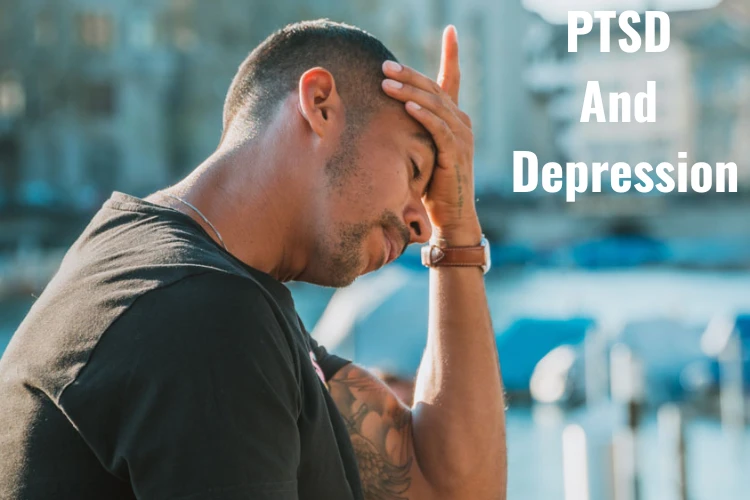Multiple jargons have popped up through the olden times, cruising their way into the current times, and it is up to us to keep ourselves updated to distinction and stay ahead in our game. There happens to be a lot of differences in the area of mental health. Our mental health means our mental well-being; our emotions, thoughts, and feelings; our capacity to solve issues and overcome challenges; our social relationships; and our understanding of the world around us. Let us see the basic difference between these two terms that form the basis of mental health. When an individual experiences chronic symptom that cause frequent discomfort and impair their capacity to operate, they have a mental disorder. A mental disorder would also impact on how one thinks, feels, conducts, and/or interacts with others. A wide spectrum of illnesses that impact one’s emotions, thinking, and behaviors can be referred to as mental illness. Depression, anxiety, bipolar illness, schizophrenia, eating disorders, Post Traumatic Stress Disorder (PTSD), psychosis, prenatal depression, and addictive behaviors are just a few examples. If any of the above-mentioned symptoms worsen, an individual might have cleared the eligibility to have a mental health issue. How can you fix your mental health at home? Download Our App now.
How Do We Understand What Is Anxiety And Post-Traumatic Stress Disorder (PTSD)?
Anxiety may make it feel like our brains are firing millions of signals every hour, making it incredibly difficult to make a clear, educated choice in a crisis. Simply told, anxiety is our body’s natural reaction to stress. It is anxiety or fear of what is to come. Fear and dread can sometimes endure or worsen over time. It can also induce chest discomfort and make you feel anxious in your chest.
PTSD is a mental health illness and a type of anxiety disorder caused by experiencing a traumatic incident. A traumatic experience is a situation that causes a person bodily, emotional, or psychological anguish. Flashbacks, nightmares, and acute anxiety, as well as uncontrolled thoughts about the incident, may be symptoms. Most people who suffered traumatic situations have temporary difficulties adjusting and coping, but they normally get better with time and adequate self-care. One may have PTSD if their symptoms worsen, linger for months or perhaps years, and interfere with their daily functioning. People suffering from PTSD frequently have co-occurring problems such as anxiety disorders, depression, and drug abuse.
If one has a history of other mental health problems, blood relatives with mental health problems, or a history of alcohol or drug misuse, they are more likely to develop PTSD following a stressful experience.
How does Anxiety Disorder affect mental health? Do you want to talk to some experts? To learn more about PTSD, Contact the Best Online Therapist in India…
What is the Dfference Between Anxiety and PTSD?
The difference between PTSD and anxiety is that they are two sides of the same coin, as the former emerges as a type of the latter. However, even though their symptoms sometimes overlap, PTSD is usually associated with traumatic and stressful events in the past. There are certain differences that set these two apart from each other at the same time, causing almost similar effects on the people suffering from them. The intensity of anxious thoughts and the frequency of the same decision is the category under which one falls.
Based on the different categories or types of anxiety, we can then understand the difference or connection these have with PTSD. These are as follows:
GAD v/s PTSD
The root cause of the condition is the primary distinction between GAD and PTSD. Symptoms of GAD arise or intensify after a distressing incident. Intrusion symptoms, avoidance symptoms, upsetting nightmares, and hypervigilance are the four types of PTSD symptoms. GAD does not involve dissociative symptoms, which are common in PTSD patients. While dread or anxiety are frequent in both PTSD and GAD, GAD patients have continuous or excessive worry. That anxiety is not connected to a single incident; rather, it is common across a wide range of events and circumstances.
Panic disorder and PTSD
It is not unusual for a person suffering from PTSD to also suffer from panic disorder. A person suffering from PTSD may also have panic-like symptoms such as heart palpitations, shortness of breath, and hot flushes. However, these attacks are triggered by reliving the traumatic incident through experiences such as dreams, thoughts, and flashbacks.
Our mental wellness experts can equip you with quite a few skills to deal with day-to-day stressors.
Other Differences
OCD and PTSD
PTSD and obsessive-compulsive disorder (OCD) are anxiety disorders that frequently co-occur in those who have experienced trauma. According to research, a person diagnosed with PTSD has a 30% chance of acquiring OCD within a year.
We don’t have to suffer alone and hope that things will get better. We can look around and reach out to get help because each one of us deserves to get in touch with our inner potential to be content and secure. We deserve the support to get through any mental health disorders as they are reversible and can be maintained to a certain extent if consultation is sought for. We should never forget that the power we need to look within and seek help is going to help us come out stronger on the other side.
“There is no normal life that is free of pain. It’s the very struggle with our problems that can be the impetus for our growth.” — Fred Rogers
Any form of anxiety, trauma-related or otherwise can be mentally taxing. Consult our therapists/counsellors at Ganeshaspeaks.com to prioritize your wellness.



